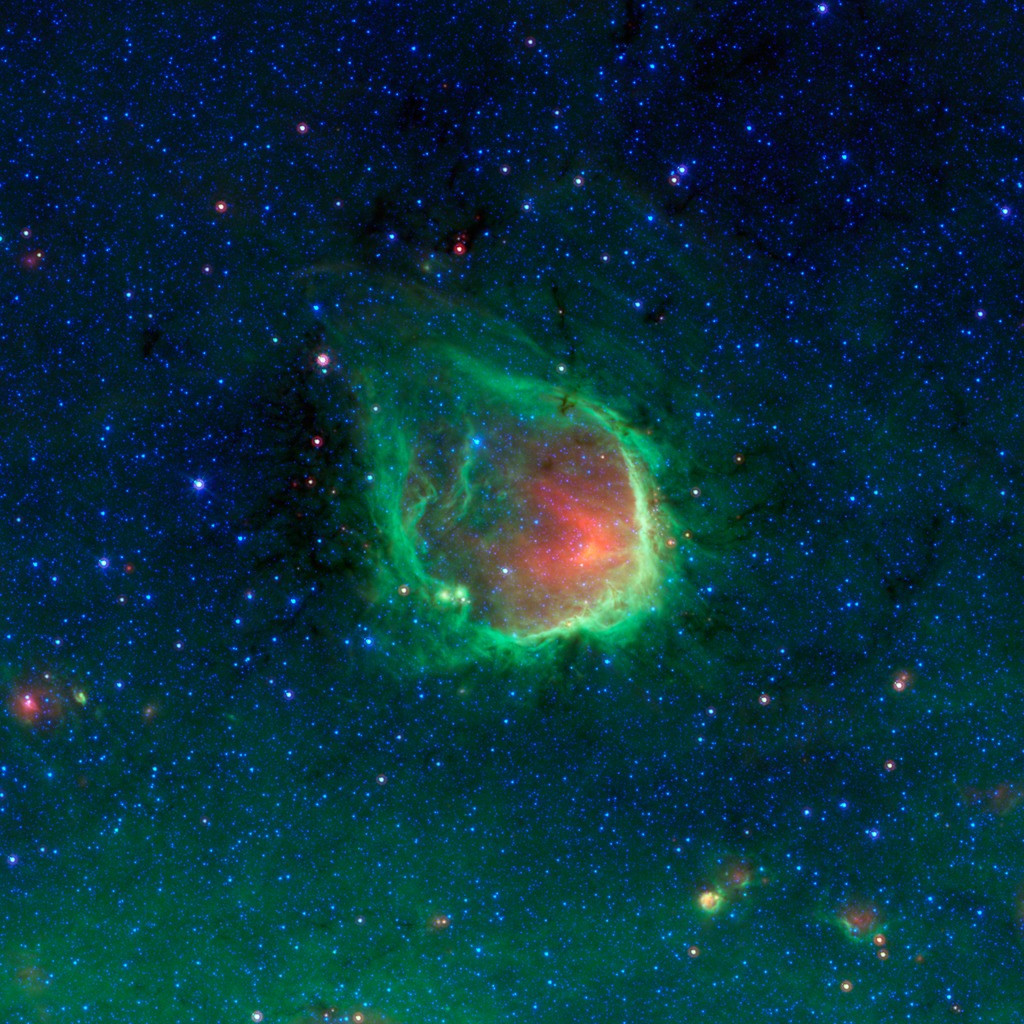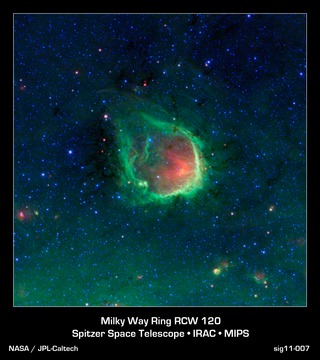
Credit: NASA/JPL-Caltech/GLIMPSE-MIPSGAL Teams
Observation • June 14th, 2011 • sig11-007a
sig11-007a
This glowing emerald nebula seen by NASA's Spitzer Space Telescope has been sculpted by the powerful light of giant "O" stars. O stars are the most massive type of star known to exist.
Named RCW 120, this region of hot gas and glowing dust can be found in the murky clouds encircled by the tail of the constellation Scorpius. The ring of dust is actually glowing in infrared colors that our eyes cannot see, but show up brightly when viewed by Spitzer's infrared detectors. At the center of this ring are a couple of giant stars whose intense ultraviolet light has carved out the bubble, though they blend in with other stars when viewed in infrared.
This bubble is far from unique; Spitzer has found that such bubbles are common and can be found around O stars throughout our Milky Way galaxy. The small objects at the lower right area of the image may themselves be similar regions seen at much greater distances across the galaxy.
Rings like this are so common in Spitzer's observations that astronomers have even enlisted the help of the public to help them find and catalog them all. Anyone interested in joining the search as a citizen scientist can visit "The Milky Way Project," part of the "Zooniverse" of public astronomy projects, at http://www.milkywayproject.org/ .
RCW 120 can be found slightly above the flat plane of our galaxy, located toward the bottom of the picture. The green haze seen here is the diffuse glow of dust from the galactic plane.
This is a three-color composite that shows infrared observations from two Spitzer instruments. Blue represents 3.6-micron light and green shows light of 8 microns, both captured by Spitzer's infrared array camera. Red is 24-micron light detected by Spitzer's multiband imaging photometer.
About the Object
- Name
- RCW 120 • GUM 58 • Sh 2-3 • Green Ring Nebula
- Type
- Nebula > Type > Star Formation
- Nebula > Appearance > Emission > H II Region
- Distance
- 4,300 Light Years
Color Mapping
| Band | Wavelength | Telescope |
| Infrared | 3.6 µm | Spitzer IRAC |
| Infrared | 8.0 µm | Spitzer IRAC |
| Infrared | 24.0 µm | Spitzer MIPS |
Astrometrics
- Position ()
- RA =17h 12m 23.2s
- Dec = -38° 26' 51.2"
- Field of View
- 36.0 x 36.0 arcminutes
- Orientation
- North is 53.9° left of vertical





